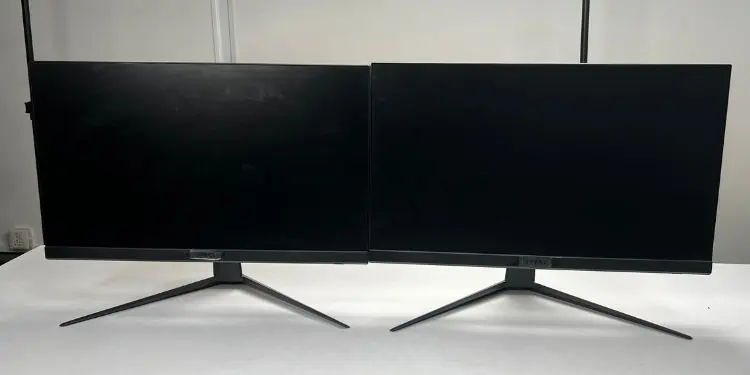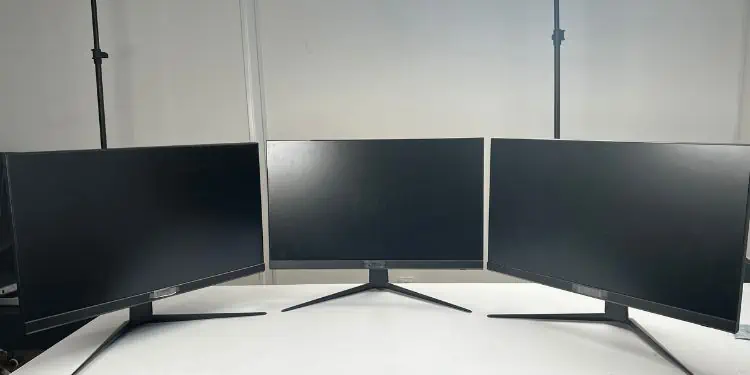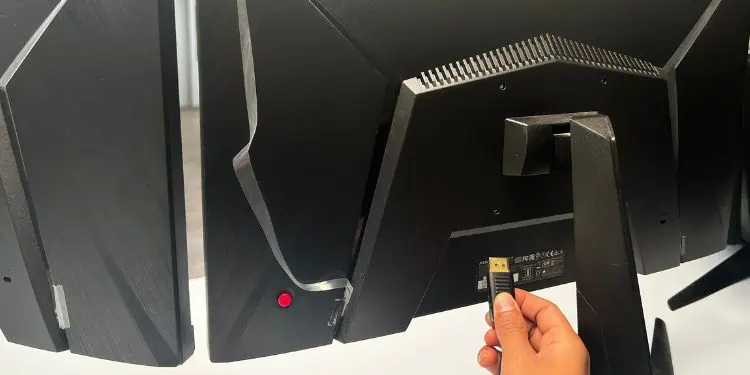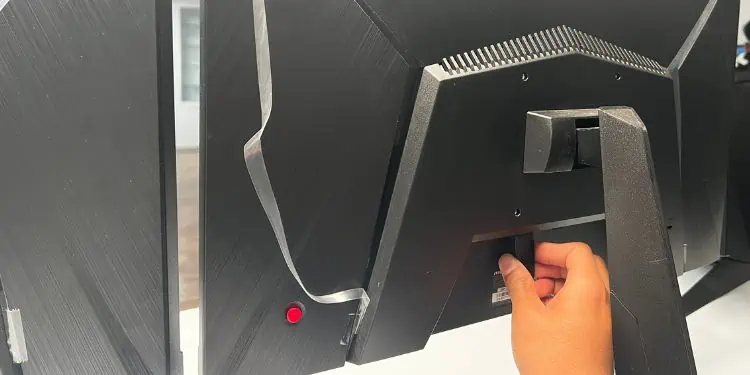Amulti-monitor setupis excellent for multitasking purposes. While most users prefer connecting all the screens directly to the computer ports, it’s much more advantageous to hook them in a daisy chain fashion.
Daisy chaining simply meanswiring all your monitors in a sequencesimilar to the garland of daisy flowers (monitor-to-monitor connection). This way, you do not require additional computer ports, all the cables stay organized, and additionally improve the screen space.

However, daisy chaining is only possible on monitors havingDisplayPort 1.2 or Thunderbolt ports. Also, the DisplayPort should supportMulti-Stream Transport (MST)which is responsible for transporting multiple video signals through a single cable.
Gather Necessary Tools
First of all, ensure you have gathered all the necessary tools. As mentioned earlier, you’ll need monitors with both input and outputDisplayPort 1.2or Thunderbolt ports that support the MST feature.
Next, you need to know it’s possible to daisy chain only a certain number of monitors, depending on your GPU’shighest supporteddisplay resolution.Below is the complete chart that should give you an idea of the number of screens you may connect.

Now, kindly gather the same number ofDisplayPort or Thunderbolt cablesas the monitors you’re going to daisy chain. Note that the latter one provides a higher bandwidth (4K@60Hz for two and 1080p@60Hz for six displays).
Enable MST Settings
Once you’ve gathered all the necessary items, you need to now configure MST settings on all your screens (except the last one). For example, in a quad-monitor, the first three in the chain require MST settings to be enabled while the fourth one doesn’t necessarily need to support the feature.
Here’s a quick demonstration of how to turn on MST settings on any monitor:

Enable DisplayPort 1.2 [Optional]
While most modern monitors automatically adapt to the DisplayPort 1.2 settings, some still require it to be enabled from the On-Screen Display menu. Here’s a simple guide on how you can do just that:
Position Your Monitors
The next step is to position the monitors based on your workspace and preference. Also, you need to considerhow far you’re sitting from the monitorand the number of screens you’re setting up.
If you’resetting up dual monitorsof identical sizes, place them bothright in front of you. The inner edges should coincide, forming a semi-circle. However, if one of the displays is bigger than the other, place the primary one in front of you, and the smaller one on your side.

For a triple-monitor setup, the best ergonomic method is placing the primary screen in front of you, and thetwo on the sides(half of a semi-circle). You can also rotate the mounted displays vertically to save desk space or view content efficiently.
Well, we’ve also prepared a dedicated article that should help you create dual, triple, and multi-monitor setups and learn more about how to position them the right way.
Daisy Chain Monitors
Once you’ve positioned the screens based on your preference and ergonomics, it’s time to start connecting one to the other. With all the necessary cables (DisplayPort or Thunderbolt) you’ve gathered, go through the following steps on how to daisy chain monitors: